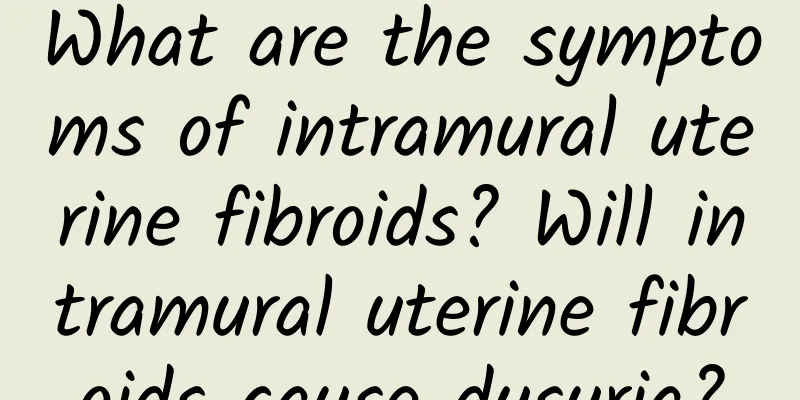What are the symptoms of intramural uterine fibroids? Will intramural uterine fibroids cause dysuria?

|
Uterine fibroids are the most common gynecological disease in women. According to the location of the growth of the fibroids, they are divided into submucosal fibroids, intramural fibroids and subserosal fibroids. Among them, intramural fibroids are the most common, accounting for 60%-70% of the total number of fibroids. Because the early symptoms are not obvious, patients tend to ignore it, and it is the main factor affecting women's health, the "invisible killer". So what are the symptoms of intramural uterine fibroids? Intramural uterine fibroids are located within the muscular wall and are surrounded by the muscular layer. There are no obvious symptoms in the early stage and they cannot be confirmed only during gynecological examinations. These six conditions are closely related to the location, size, growth rate and degeneration of the fibroids. 1. Vaginal bleeding: Bleeding is the most common symptom of intramural uterine fibroids, manifested as shortened menstrual cycle, increased menstrual volume, prolonged menstrual period, irregular vaginal bleeding, etc. 2. Abdominal mass and compression symptoms: abdominal swelling, lower abdomen and mass, accompanied by a sagging feeling. 3. Increased leucorrhea: When leucorrhea increases and submucosal fibroids are infected, there may sometimes be a large amount of purulent and bloody discharge and necrotic tissue, accompanied by a foul smell. Once intramural fibroids are found, female friends should actively seek treatment to avoid infertility, miscarriage and other consequences. Its harm is reflected in the following aspects: 1. Abdominal masses and compression symptoms cause frequent urination, difficulty urinating, urinary retention or constipation. 2. Infertility and miscarriage: Fibroids compress the fallopian tubes and cause them to twist, or deform the uterine cavity, hindering the implantation of the fertilized egg, leading to infertility or miscarriage. 3. Secondary anemia: If the patient has excessive menstruation for a long time, it may lead to secondary anemia, general fatigue, pale complexion, shortness of breath, palpitations and other symptoms. 4. Lower abdominal swelling, back pain, aggravated menstruation, erythematous degeneration of myoma, acute lower abdominal pain accompanied by vomiting and fever. The above introduces the symptoms of intramural uterine fibroids. I believe everyone has a certain understanding of them and I hope it will be helpful to everyone. |
<<: What are the symptoms of uterine fibroids? What are the diagnostic methods for uterine fibroids?
Recommend
What are the clinical manifestations of endometriosis?
Endometriosis is a serious disease. Many people i...
How to treat leucorrhea that is red and sticky? The cause is quite complicated
If a woman's leucorrhea is red and sticky, th...
I always eat out for three meals a day and only eat white rice. What should I do if it is high in starch?
Friends often ask Stella that they often hear nut...
Don’t drink milk on an empty stomach in the morning? Nutritionists debunk 4 milk myths
"I'm almost late for work, I'd bette...
What causes cervical erosion? Check out 5 causes of cervical erosion
In fact, cervical erosion is not an independent g...
Pay attention to the harm of bacterial vaginosis
If we have a certain understanding of the harm ca...
Experts introduce methods to prevent adnexitis
Adnexitis has become a concern for many women. Th...
Beware! What are the effects of cervical erosion on pregnancy?
Cervical erosion is one of the major diseases tha...
6 signs of menopause in women
Women usually experience some signs before menopa...
Can adnexitis cause infertility?
The fallopian tubes and ovaries are the appendage...
Teach you how to prevent pelvic inflammatory disease
Drink more water to prevent pelvic inflammatory d...
Craving for fast food? Yixiu teaches you how to make low-calorie bean chicken nuggets, low in calories and more satisfying
I remember from childhood that when we did well i...
Why do uterine fibroids grow so fast?
If you find that uterine fibroids are growing too...
Lower body weight loss method: (Part 1) Lower abdomen
How to slim down the lower body has always been o...
What should I pay attention to when eating for pelvic effusion?
What should you pay attention to in your diet for...









